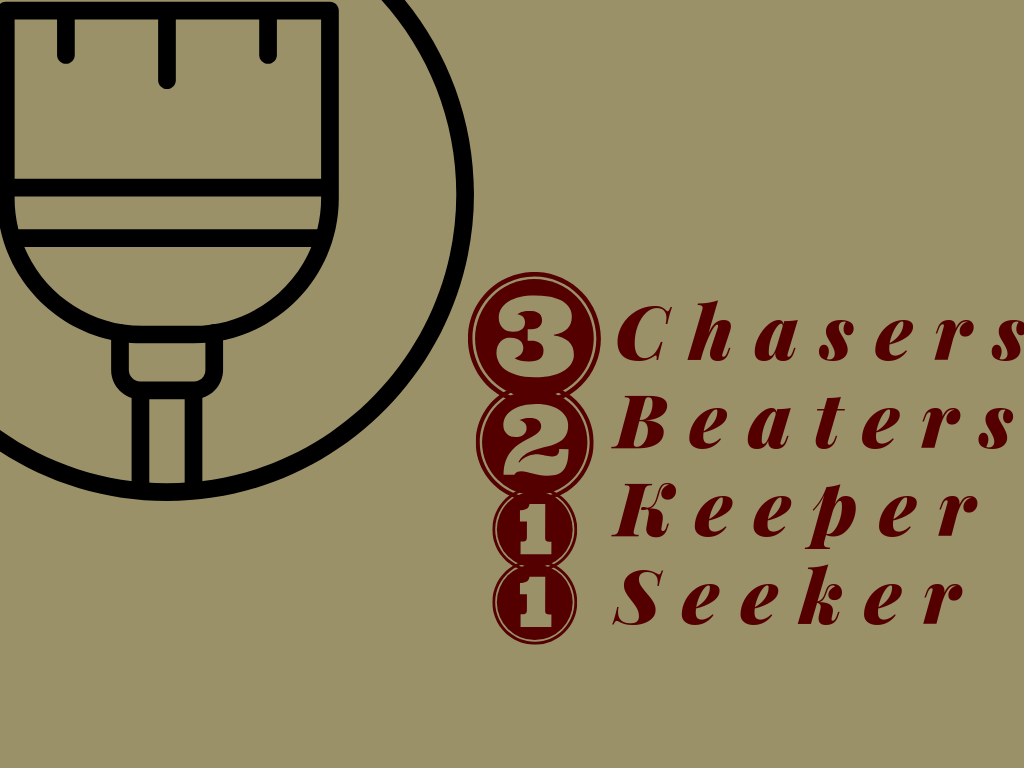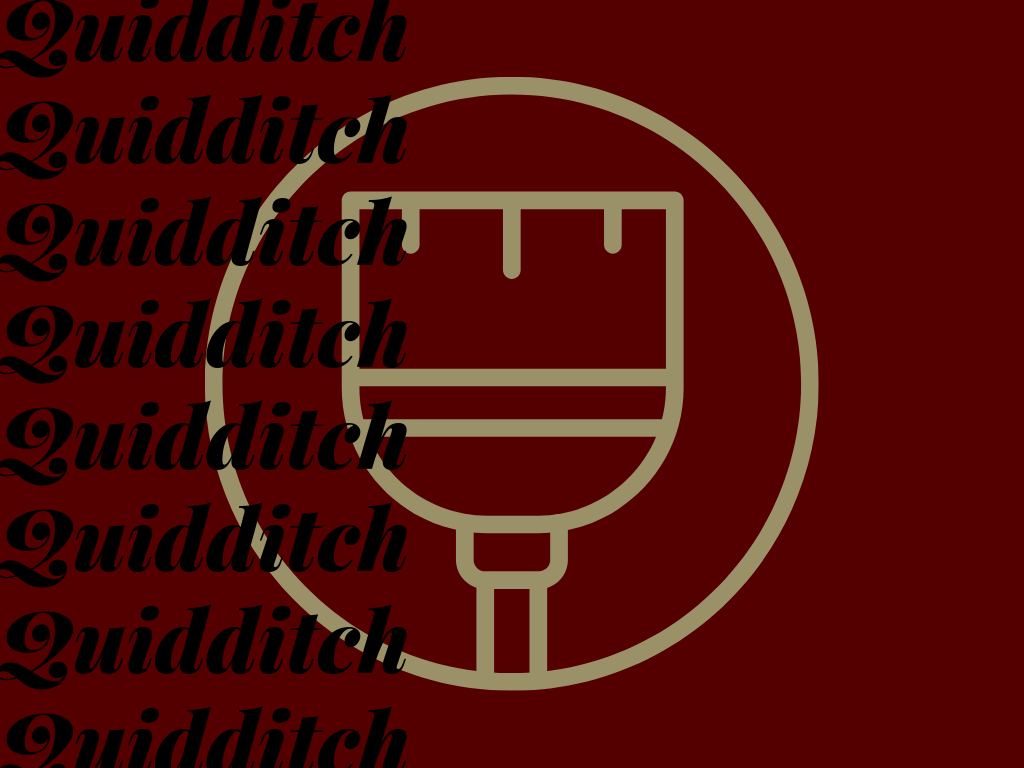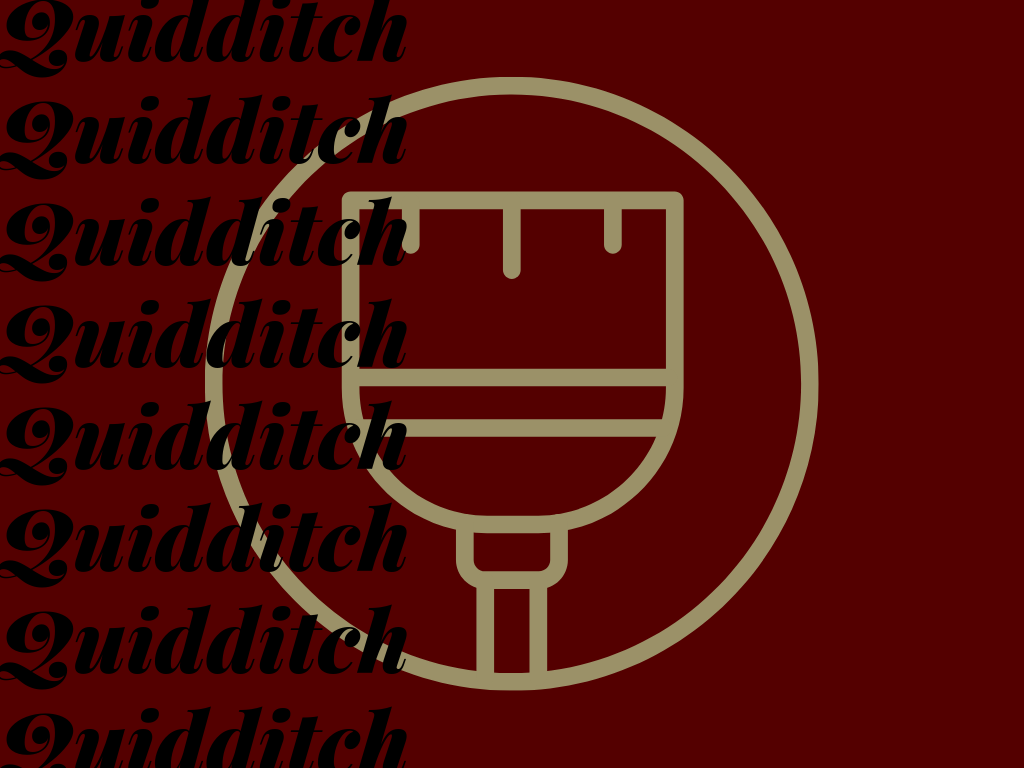Quidditch for Dummies
Words by Jada Gordon
Illustration by Katie Herchenroeder
I am a part of a small percentage of the world who has never read or seen “Harry Potter.” Although the films and book series have been an integral symbol of childhood for so many, I have never been a part of this phenomenon. Yet, I understand that “Harry Potter” has been a part of many people’s lives, in impactful, meaningful ways.
However, one of the components of “Harry Potter” that I have always been curious about and enamored by is the sport the young wizards of Hogwarts play - Quidditch. The game of Quidditch is a fictional sport invented by the author of the book, J.K Rowling. It is a dangerous, but popular semi-contact sport. The matches are played on a large oval pitch with three ring shaped goals of different heights on each side. On two opposing teams, there are seven players each and they have very specific positions: Three Chasers, two Beaters, the Keeper, and the Seeker. There are three different balls: the Quaffle, the two Bludgers, and the Golden Snitch.

However, to receive a deeper understanding of the game Quidditch and how it is played, two Macaulay Marauders Quidditch Team members, Kay Kelly and Erin Wengerter, agreed to be explain this fascinating game.
Kay Kelly
Treasurer of the Macaulay Marauder Quidditch Team
Position: Beater
Sophmore
Erin Wengerter
Position: Chaser
Sophmore
1. How is quidditch played in real life as opposed to the movie and book version of Quidditch?
Kay: Quidditch, like in the books, is a co-ed competitive team sport. Some have compared its basic structure to rugby or European handball. We play on turf or grass pitches, almost always outdoors, with three hoops set up at each end. We do play on "brooms," or a simplified version of them.
There are four positions: three chasers, two beaters, one keeper, and a seeker. Chasers score points by putting a quaffle (a volleyball) through hoops. Beaters throw bludgers (rubber dodgeballs) to knock opponents out of play for a short time. Keepers act like a goalie on defense. Seekers enter later in the game, once some points have been scored to catch the snitch--an impartial party that carries a little ball behind them, which once caught, gives the catching team thirty points and ends the game.
The positions, hoops, balls, use of "brooms," and basic gameplay are all the same as the books and films. Changes have been made because of our unfortunate lack of magic, and because of other practical reasons; for example, like other sports, we use red, yellow, and blue cards, and allow player substitutions. The snitch is worth thirty points instead of one hundred fifty.
Erin: Unfortunately, we can’t fly like in the movies, but who is to say one day in the future that won’t become a reality? Also, the snitch has to be attached to a very agile person in the game for the seekers to try and catch. Similarities arise in the physicality in the sport in my opinion as tackling is allowed - of course with practical limitations - and dodgeballs are hurled at opponents at painful speeds.

2. What drew you to the sport of Quidditch besides being a fan of Harry Potter? Do you have to be a fan of Harry Potter to play Quidditch?
Kay: I have wanted to play Quidditch since I first read the books at six years old. I tried and failed to start a team at my high school. When I applied to college, I checked for schools that had Quidditch teams or where I could start my own. I knew I wanted to try a team sport for the first time and to be active outside of regular college athletics.
I am a die-hard fan, but most people who play Quidditch these days are not intense fans at all! Plenty of players have never read the books or seen the movies, nor do they have any desire to do so. These players are attracted to this fun activity with an incomparable, supportive community of players that don't take themselves too seriously to play a sport such as Quidditch.
Erin: Throughout high school, I was a three-season athlete, but I knew things would have to be different going into college as I was trying to pursue a major in Engineering. Considering that practice is only an intense session once a week, it allowed me time to stay on top of my studies while also staying in shape. Also, just general curiosity drew me to try out the sport. After all, not all schools have the gift of this awesome sport. Of course, you don’t have to be a Harry Potter fan to play! Some of the best players on our team have not read the books or watched the movies, so the sport is really open to anyone!

3. Is there a national or regional network of quidditch teams? If so, does the Macaulay Honors quidditch team compete?
Kay: USQ, or United States Quidditch, is the non-profit organization that manages over one hundred fifty collegiate and community teams nationwide. The Macaulay Marauders play in their collegiate division against other college teams, but we often unofficially play community teams - usually older post-undergraduate players - too. We play in the Northeast Region, which includes Boston University, New York University, Harvard, and others. Locally, we play most frequently in the Big Apple Quidditch Conference, with schools like Stony Brook and Hostra. There's even an International Quidditch Association, in which the US national team participates.
Erin: Yes, of course! As you can tell I’m really excited and proud of this. We are not a part of the regional or national network, but we have competed on both the regional and national stage in different parts of the country. For example, last year there was a regional tournament held in Rochester where a plethora of schools across the northeast part of the country attended. As we performed well enough to get a bid to nationals, we traveled to Texas for the national competition in the spring. Even though we did not win, the experience was phenomenal and something I would love to experience again and again and again.
Within America there are different regional teams. For example, this summer I was a part of the New York Titans which competed across the country against different regional/state teams. The competition was fierce; before I wasn’t able to compete anymore due to a concussion. Additionally, there is a national network and the U.S.A. Team generally tends to dominate the competition against other countries.
You can find out more about the Macaulay Marauders and their upcoming matches on Instagram- @macaulayquidditch, Facebook- Macaulay Marauders Quidditch Team, and via email at macaulayquidditch@gmail.com





